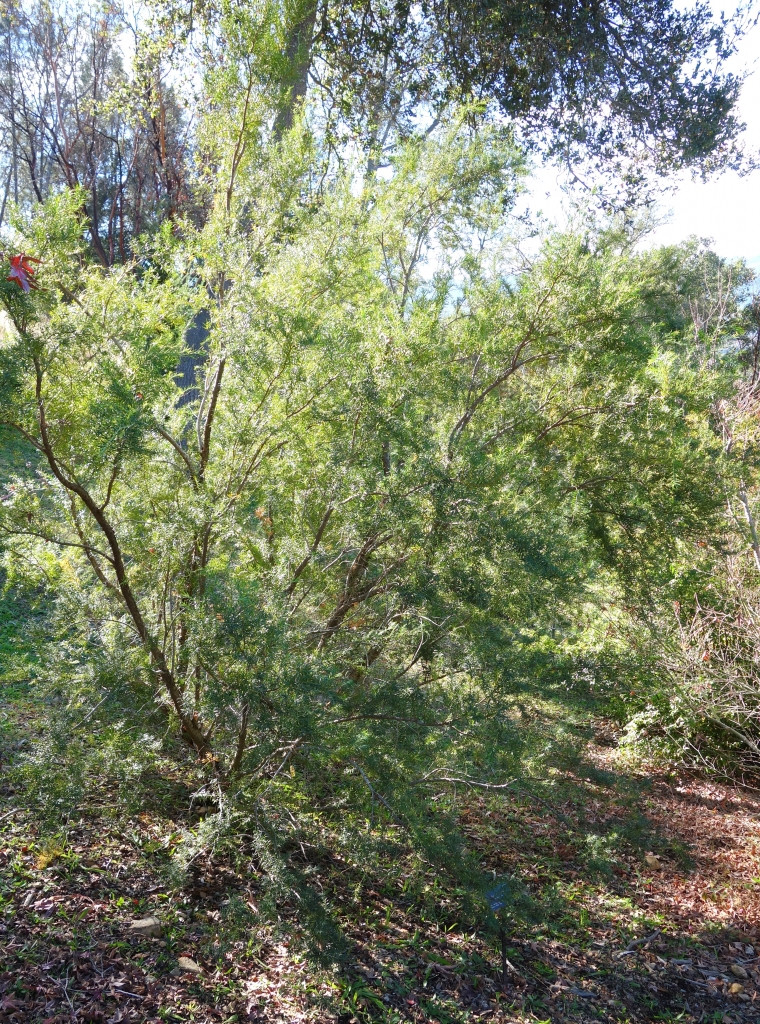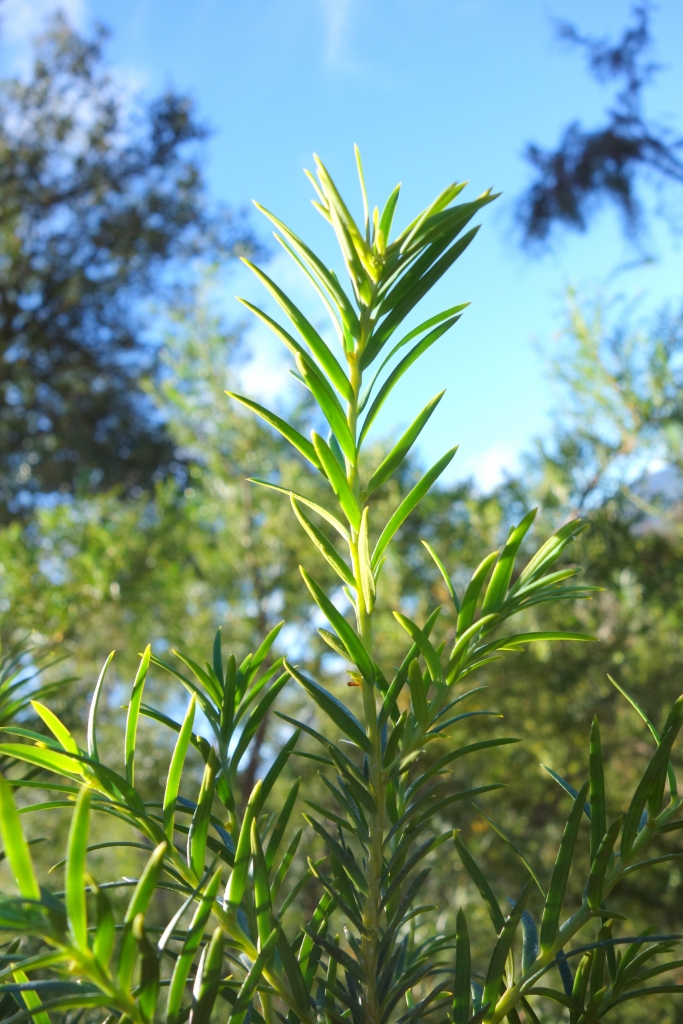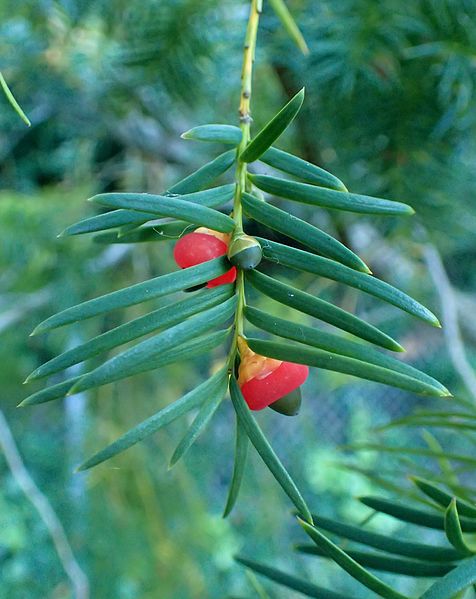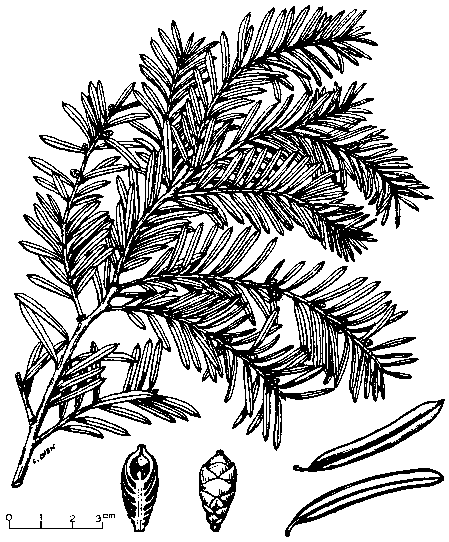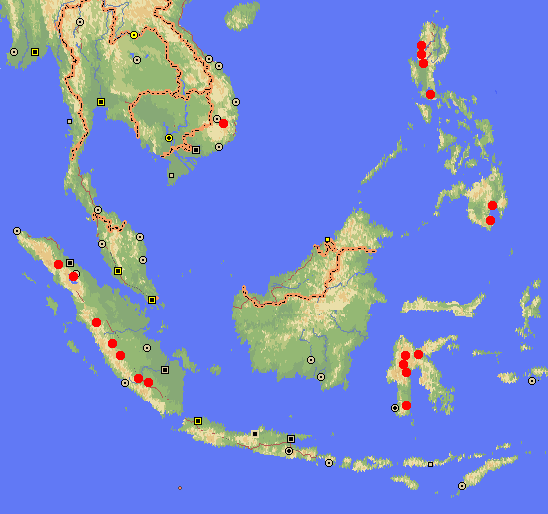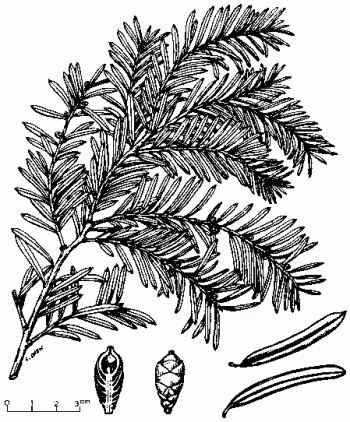
Taxus sumatrana, as described in 1978 by (Miquel) David John de Laubenfels (1925 - 2016), in Kalikasan, Philippine Journal of Biology, 7th edition is commonly known as Taiwan or Chinese yew; as well as Tampinur batu in Malay; and as Hong dou shan in Chinese. The species name classifies this conifer as a Sumatran endemic.
Some botanical authors, notably Aljos Farjon in A Handbook of the World's Conifers (2010) synonymize T. sumatrana with T. wallichiana. Others like Chris Earle at conifers.org treat it as a distinct species on primarily biogeographical grounds; its distribution is disjunct from the other Asian species of Taxus and it is the only species in the genus to occupy fully tropical habitats. The ACS agrees with Earle's logic here.
Description. Taiwan yew is a shrubby, evergreen coniferous species of tree that grows to mature heights of 45 feet (14 m) tall, growing wide and bushy in cultivation. Crown is dome-shaped with dense, upwardly angled to horizontal branches.
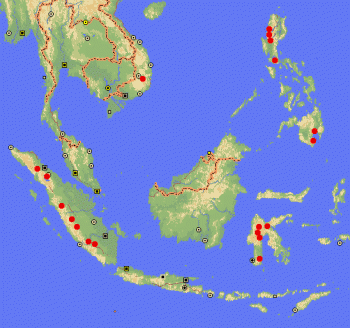
Distribution. This species is native to Sumatra, Philippines, and Celebes growing at elevations of 4,600 to 7,500 feet (1,400 - 2,300 m) above sea level in moist subtropical forests, tropical highland ridges and moss forests in the subcanopy, where it is locally dominant. In the Philippines it occurs on high ridges and mountain summits in mossy forest, or sometimes in rocky grass and scrubland. In Sumatera and Sulawesi it is usually a mid-montane species.
Presumed hardy to UDSA Zone 8 - cold hardiness limit between 10° and 20°F (-12.1° and -6.7°C), as specimens are known to exist in cultivation both in Seattle and San Francisco.
